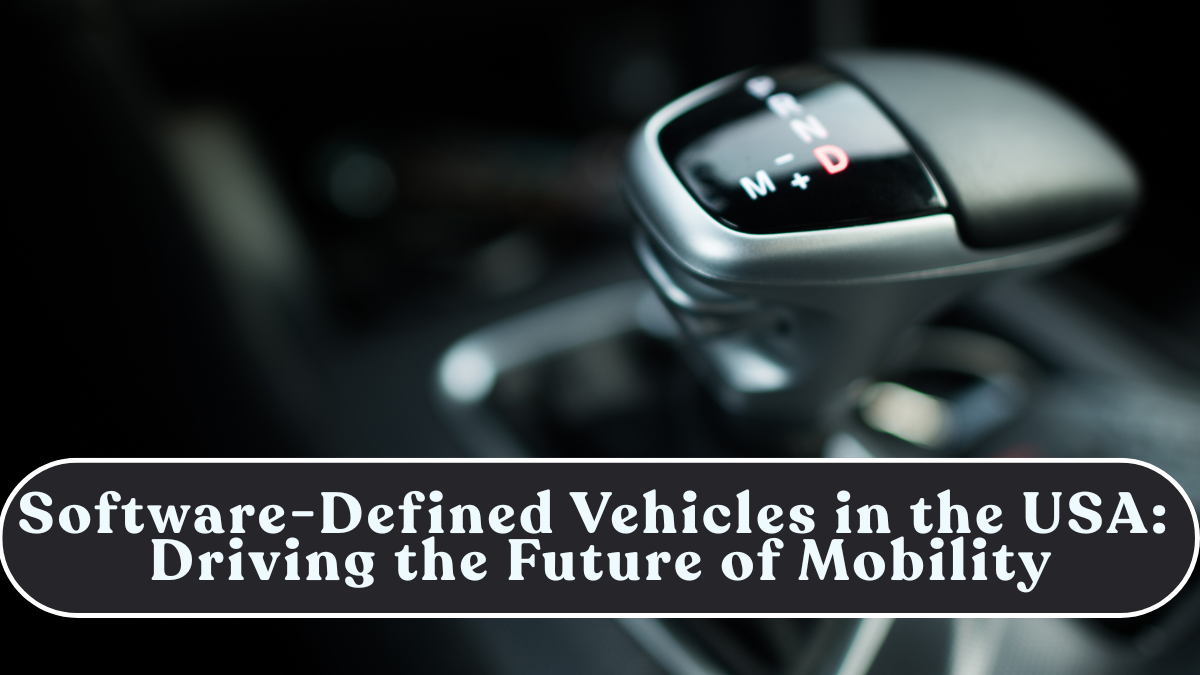Cars are no longer just mechanical machines—they’re becoming computers on wheels. The rise of software-defined vehicles (SDVs) marks one of the most transformative shifts in the U.S. automotive landscape. With over-the-air (OTA) updates, AI integration, and always-connected EV platforms, automakers are redefining how vehicles perform, evolve, and interact with drivers.

What Are Software-Defined Vehicles?
A software-defined vehicle is one where the majority of its functions — from performance to infotainment and even braking or steering assistance — are controlled and updated by software.
Instead of upgrading your car every few years, SDVs allow continuous digital updates that enhance safety, performance, and features remotely.
Key traits of SDVs include:
-
Over-the-Air (OTA) Updates similar to smartphone updates.
-
Cloud Connectivity for real-time diagnostics and optimization.
-
Modular Architecture enabling faster upgrades.
-
Autonomous Capabilities integrated through software patches.
Why the Shift Is Accelerating in the USA
-
Rise of Electric Vehicles:
EVs, led by Tesla and Rivian, rely heavily on software for battery management, navigation, and self-driving features. -
Consumer Demand for Upgrades:
Buyers want vehicles that improve over time, much like smartphones. -
Automaker Strategy Shift:
Legacy brands like Ford, GM, and Mercedes are transitioning from hardware-centric to software-first business models. -
Revenue Potential:
Subscription-based upgrades (e.g., heated seats, performance boosts, or autonomous modes) are creating new profit streams for automakers.
Leading Automakers and Their Software Platforms
| Brand | Platform/Software Ecosystem | Key Features |
|---|---|---|
| Tesla | Full Self-Driving (FSD) / OTA | AI-based driving assist, remote performance updates |
| Ford | BlueCruise | Hands-free highway driving, subscription features |
| GM | Ultifi | Cloud-based upgrades, infotainment customization |
| Mercedes-Benz | MB.OS | Voice AI, driver-assist integration, smart cockpit |
| Rivian | Rivian Cloud | Navigation, power management, OTA upgrades |
By 2026, it’s expected that 75% of all new vehicles sold in the USA will support OTA updates, signaling a total digital transformation of the industry.
How OTA Updates Are Transforming Car Ownership
Traditionally, vehicle improvements required a visit to the service center. Now, OTA technology allows automakers to:
-
Fix software bugs or recall issues remotely.
-
Introduce new safety and infotainment features instantly.
-
Update battery optimization algorithms for better range.
-
Personalize the car’s dashboard, driving modes, and AI assistants.
For example:
-
Tesla pushed updates improving acceleration by 0.2 seconds.
-
Rivian added a new off-road mode through an OTA update.
-
Ford’s Mustang Mach-E received range enhancements without hardware changes.
Cybersecurity and Data Privacy Concerns
With connectivity comes risk. As vehicles become software-driven, cybersecurity has become a priority.
The NHTSA’s cybersecurity standards now require:
-
End-to-end data encryption.
-
Secure authentication for OTA updates.
-
Continuous threat monitoring systems.
Automakers are collaborating with tech giants like Google Cloud, AWS, and BlackBerry QNX to secure in-car systems and cloud infrastructures.
The Rise of Car-as-a-Service (CaaS)
Software-defined vehicles also enable new ownership models:
-
Feature-on-Demand: Unlock advanced features like adaptive cruise control via monthly subscription.
-
Usage-Based Insurance: Real-time driving data allows personalized insurance pricing.
-
Fleet Optimization: For commercial fleets, OTA data improves maintenance scheduling and route planning.
This blurs the line between owning and subscribing to vehicle features — similar to apps and streaming services.
The Economic and Environmental Impact
-
Reduced Maintenance Costs:
OTA updates minimize physical recalls and service center visits. -
Sustainability Boost:
Software upgrades extend a vehicle’s lifespan, reducing waste and manufacturing demand. -
Job Creation:
The U.S. automotive software market is expected to employ over 300,000 developers by 2030.
Future Outlook
By 2030, software will account for nearly 40% of a car’s total value, compared to just 10% in 2020. Cars will evolve like smartphones — continuously improving through digital upgrades.
Manufacturers will compete not on horsepower, but on user experience, AI personalization, and connected services.
The next generation of vehicles will be “self-improving machines”, capable of learning driver behavior and enhancing safety with every mile.
Conclusion
The U.S. automotive industry is entering the software age, where innovation no longer ends at the factory floor. Software-defined vehicles are reshaping everything — from how we drive to how we pay for mobility. As connectivity, AI, and automation converge, the road ahead promises vehicles that are not just smart but smarter every day.
FAQs
What is a software-defined vehicle (SDV)?
An SDV is a vehicle whose performance, features, and systems are controlled and updated via software.
How are OTA updates changing cars?
They allow remote feature upgrades, bug fixes, and performance improvements — no workshop visit needed.
Are SDVs safe from hacking?
Yes. Modern SDVs use encryption, multi-layer firewalls, and secure cloud authentication to prevent breaches.
Which car brands lead in software innovation?
Tesla, Ford, GM, and Mercedes-Benz currently lead with advanced connected ecosystems.
Will future cars require regular updates?
Yes — just like smartphones, cars will receive periodic updates to enhance performance and safety.
